TOP 15 navigable canals important for shipping and maritime logistics
Navigable canals connect seas, lakes, and rivers and are vital because they offer shorter transport routes and also help regulate intra-country water transport and facilitate the daily movement of various vessels
Navigable canals connect seas, lakes, and rivers and are vital because they offer shorter transport routes and also help regulate intra-country water transport. Around the world, there are hundreds of transport channels of varying lengths, widths, and depths to facilitate the daily movement of various vessels. Here are 15 of the most famous canals from around the world.
1. Panama Canal
Length: 82 km
Width: 150 m
Depth: 12 m
The construction of Panama's most famous sluice canal and main tourist attraction is considered one of the most ambitious construction projects in the history of mankind.
The Panama Canal is one of the most important canals in the western region and it provides a link between the Pacific and Atlantic oceans across the Isthmus of Panama, a narrow strip separating the Caribbean from the Pacific. Since the oceans that the canal connects are at different levels, sluice gates are used on both sides of the canal to lift the vessel to a higher or lower levels. The canal was opened in 1914. With its help, ships passing between the east and west coasts of the United States shorten their journey by 15 thousand kilometers. The 82 km long waterway is mainly used by liners on the US East Coast - Asia trade route. The cost of passage through the canal varies depending on the class and size of the vessel and ranges from eight hundred to half a million dollars.
Width: 150 m
Depth: 12 m
The construction of Panama's most famous sluice canal and main tourist attraction is considered one of the most ambitious construction projects in the history of mankind.
The Panama Canal is one of the most important canals in the western region and it provides a link between the Pacific and Atlantic oceans across the Isthmus of Panama, a narrow strip separating the Caribbean from the Pacific. Since the oceans that the canal connects are at different levels, sluice gates are used on both sides of the canal to lift the vessel to a higher or lower levels. The canal was opened in 1914. With its help, ships passing between the east and west coasts of the United States shorten their journey by 15 thousand kilometers. The 82 km long waterway is mainly used by liners on the US East Coast - Asia trade route. The cost of passage through the canal varies depending on the class and size of the vessel and ranges from eight hundred to half a million dollars.
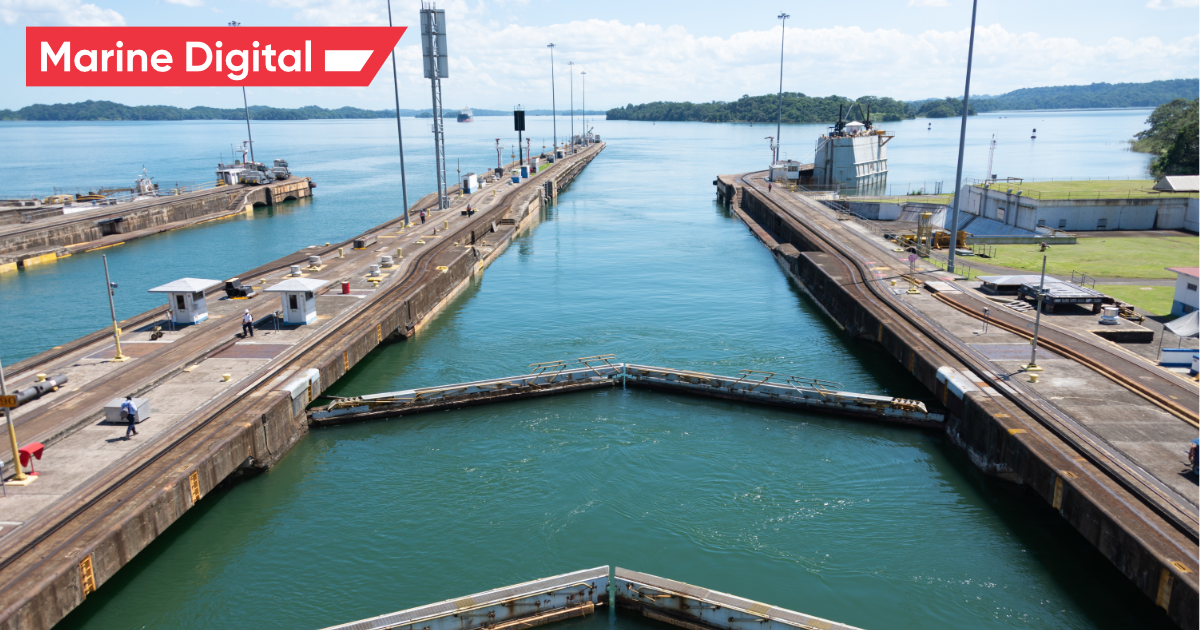
2. Suez Canal
Length: 193 km (with branches)
Width: 205 m
Depth: 20 m
The Suez Canal is one of the most important canals in the world. Recognized as the sea route, which cannot be closed even in the event of global disasters. The uniqueness lies in the absence of gateways, the streams of sea water move freely along the canal. The canal connects the Gulf of Suez and the Mediterranean Sea, separating Asia from Africa. It makes it possible to quickly get from Europe to regions with access to the Indian and Pacific oceans.
The construction of the grandiose structure, which began in the spring of 1859, took a whole decade and required the use of labor of about one and a half million people. Over the years of its existence, the Suez Canal managed to be under the rule of France, England, joint control of the two countries, and in 1956 it was nationalized by the Egyptian government. The current length of the Suez Canal is just over 162 kilometers, and the depth on the fairway is 22.5 meters.
Width: 205 m
Depth: 20 m
The Suez Canal is one of the most important canals in the world. Recognized as the sea route, which cannot be closed even in the event of global disasters. The uniqueness lies in the absence of gateways, the streams of sea water move freely along the canal. The canal connects the Gulf of Suez and the Mediterranean Sea, separating Asia from Africa. It makes it possible to quickly get from Europe to regions with access to the Indian and Pacific oceans.
The construction of the grandiose structure, which began in the spring of 1859, took a whole decade and required the use of labor of about one and a half million people. Over the years of its existence, the Suez Canal managed to be under the rule of France, England, joint control of the two countries, and in 1956 it was nationalized by the Egyptian government. The current length of the Suez Canal is just over 162 kilometers, and the depth on the fairway is 22.5 meters.
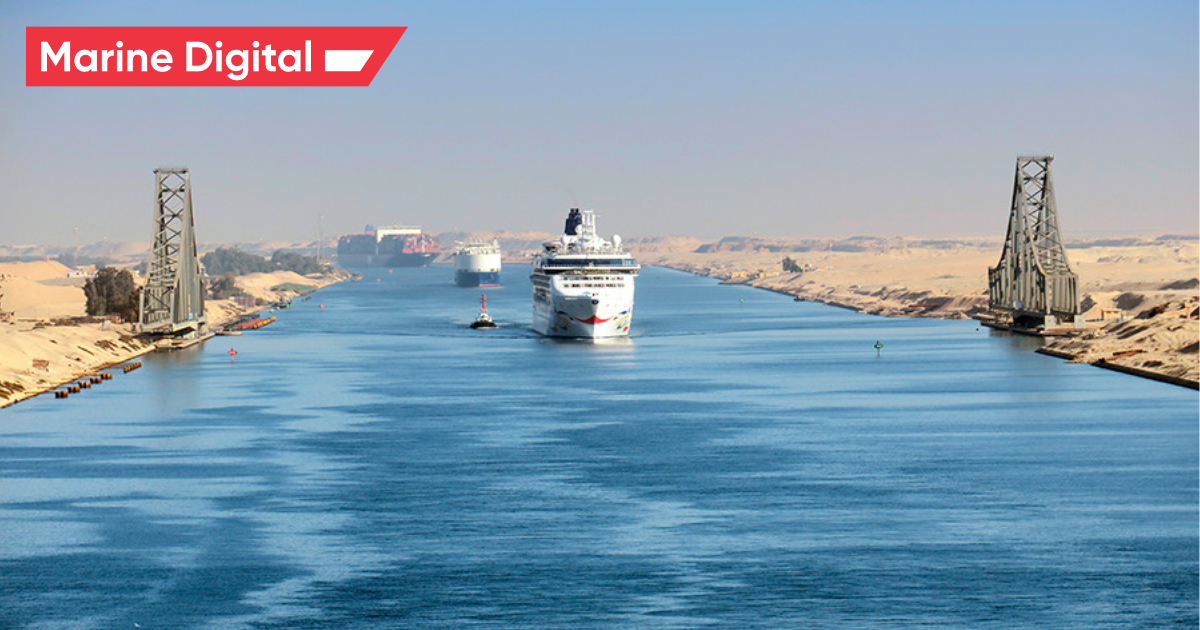
3. Great canal
Length: 1,782 km, with branches - 2,470 km
Width: 40 to 350 m
Depth: 2-3 m
The oldest and longest man-made navigable canal in the world, reaching a length of 1794 km. The construction of the canal took about two thousand years. Work began in 500 BC. e. More than 6 million people are involved.
The Beijing-Hangzhou Canal connects the main waterways of the country - the Yangtze and Yellow He rivers, capturing several lakes. It runs along the channels of the Seshui, Weihe, Baihe rivers, in the central part - through the Hangou canal. Equipped with 21 gateways. 60 bridges have been built across the canal.
The Grand Canal makes a huge contribution to China's economy, transporting 30 million tons of cargo annually. Now it is no longer the most important transport artery of the country, but it has become a very important tourist attraction in China and in 2014 it was included in the UNESCO register.
Width: 40 to 350 m
Depth: 2-3 m
The oldest and longest man-made navigable canal in the world, reaching a length of 1794 km. The construction of the canal took about two thousand years. Work began in 500 BC. e. More than 6 million people are involved.
The Beijing-Hangzhou Canal connects the main waterways of the country - the Yangtze and Yellow He rivers, capturing several lakes. It runs along the channels of the Seshui, Weihe, Baihe rivers, in the central part - through the Hangou canal. Equipped with 21 gateways. 60 bridges have been built across the canal.
The Grand Canal makes a huge contribution to China's economy, transporting 30 million tons of cargo annually. Now it is no longer the most important transport artery of the country, but it has become a very important tourist attraction in China and in 2014 it was included in the UNESCO register.
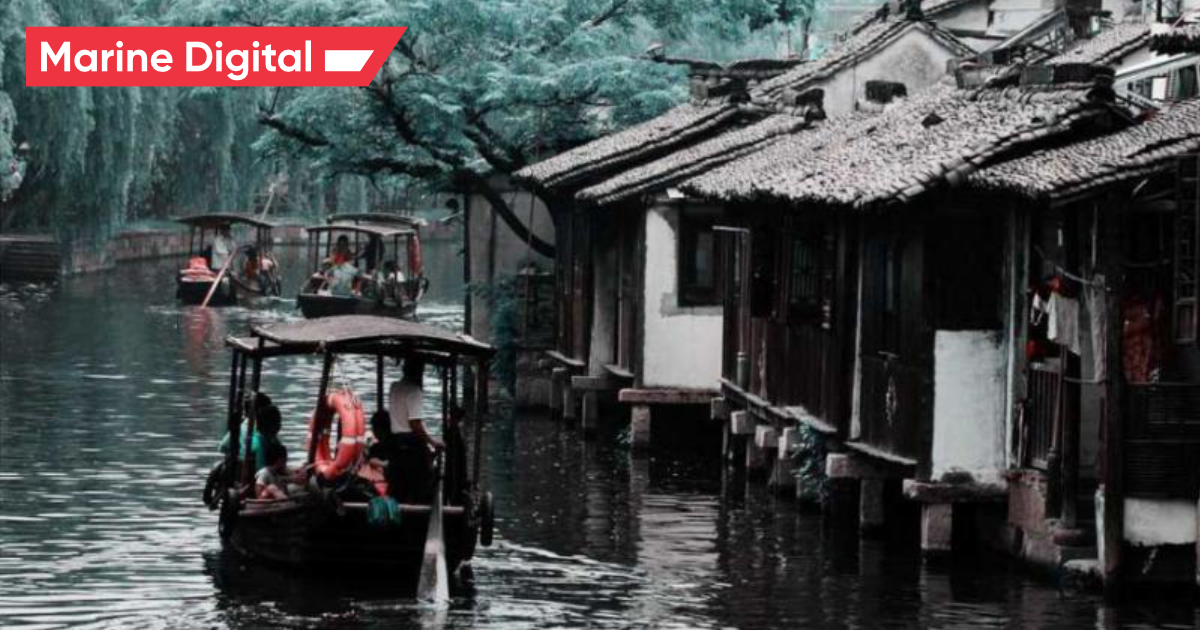
4. Corinth Canal
Length: 6 km
Width: 25 m
Depth: 8 m
The narrowest canal in the world. People have thought about its construction long ago in the 7th century B.C., but it was opened only in 1893. Hungarian architects Tyrr and Gerster worked on the project for 12 years, and 2,500 people were involved.
Connecting the Corinthian Gulf of the Ionian Sea and the Saronic Gulf of the Aegean Sea, the canal passes through the narrow Isthmus of Corinth and separates the Peloponnese from mainland Greece. A narrow channel, fenced on both sides by impregnable rocks (height 76 m), does not shorten, but increases the route by 346 km, but allows ships to avoid treacherous underwater rocks. Currently, due to the increase in the size of the vessels, the channel is almost not used. Only about 15 thousand ships pass through the Corinth Canal per year, which makes it the most expensive canal in the world in terms of a kilometer of length.
Width: 25 m
Depth: 8 m
The narrowest canal in the world. People have thought about its construction long ago in the 7th century B.C., but it was opened only in 1893. Hungarian architects Tyrr and Gerster worked on the project for 12 years, and 2,500 people were involved.
Connecting the Corinthian Gulf of the Ionian Sea and the Saronic Gulf of the Aegean Sea, the canal passes through the narrow Isthmus of Corinth and separates the Peloponnese from mainland Greece. A narrow channel, fenced on both sides by impregnable rocks (height 76 m), does not shorten, but increases the route by 346 km, but allows ships to avoid treacherous underwater rocks. Currently, due to the increase in the size of the vessels, the channel is almost not used. Only about 15 thousand ships pass through the Corinth Canal per year, which makes it the most expensive canal in the world in terms of a kilometer of length.
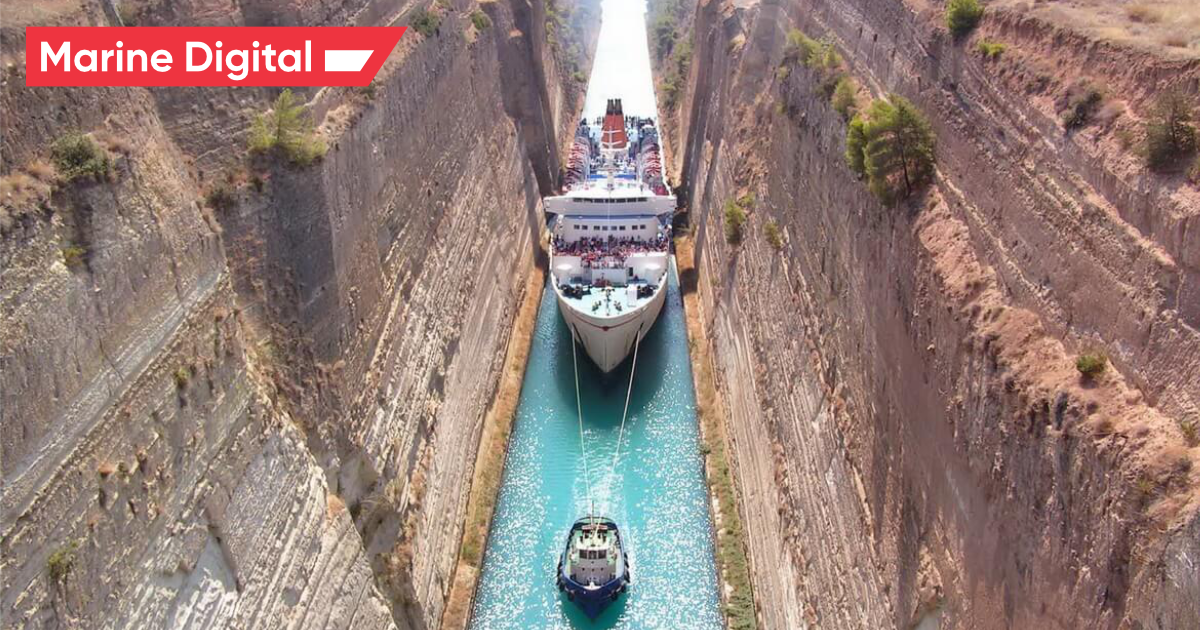
5. Mittelland canal
Length: 325 km
Width: 55 m
Depth: 4 m
The longest canal in Germany and the country's most important transport hub. It connects the Rhine with major waterways of the state, including the Elbe, Ems, Weser and Oder rivers. The Central German Canal provides a link between Western and Eastern Europe. The opening took place in 1938. Construction work took more than 50 years, but the canal continues to improve and reconstructe to this day.
This canal is known for its extremely picturesque views on its banks, which attracts many tourists to these places, as well as for bridges and unusual structures for crossing ships.
Width: 55 m
Depth: 4 m
The longest canal in Germany and the country's most important transport hub. It connects the Rhine with major waterways of the state, including the Elbe, Ems, Weser and Oder rivers. The Central German Canal provides a link between Western and Eastern Europe. The opening took place in 1938. Construction work took more than 50 years, but the canal continues to improve and reconstructe to this day.
This canal is known for its extremely picturesque views on its banks, which attracts many tourists to these places, as well as for bridges and unusual structures for crossing ships.

6. Volga-Don Canal
Length: 101 km
Width: 80 m
Depth: 4 m
The Volga-Don Canal links the Russian rivers Volga and Don, providing an important waterway through the Azov and Caspian Seas to the main oceanic networks. The canal passes through the reservoirs: Varvarovka, Bereslavka, Karpovka. It has 13 locks: 9 for ascent on the slope of the Volga River, 4 for descent to the Don River.
The construction of the canal began in the 16th century, but all attempts ended in failure. Until 1917, 30 projects of the canal were developed, but in reality it was built only under the Soviet rule.
Width: 80 m
Depth: 4 m
The Volga-Don Canal links the Russian rivers Volga and Don, providing an important waterway through the Azov and Caspian Seas to the main oceanic networks. The canal passes through the reservoirs: Varvarovka, Bereslavka, Karpovka. It has 13 locks: 9 for ascent on the slope of the Volga River, 4 for descent to the Don River.
The construction of the canal began in the 16th century, but all attempts ended in failure. Until 1917, 30 projects of the canal were developed, but in reality it was built only under the Soviet rule.
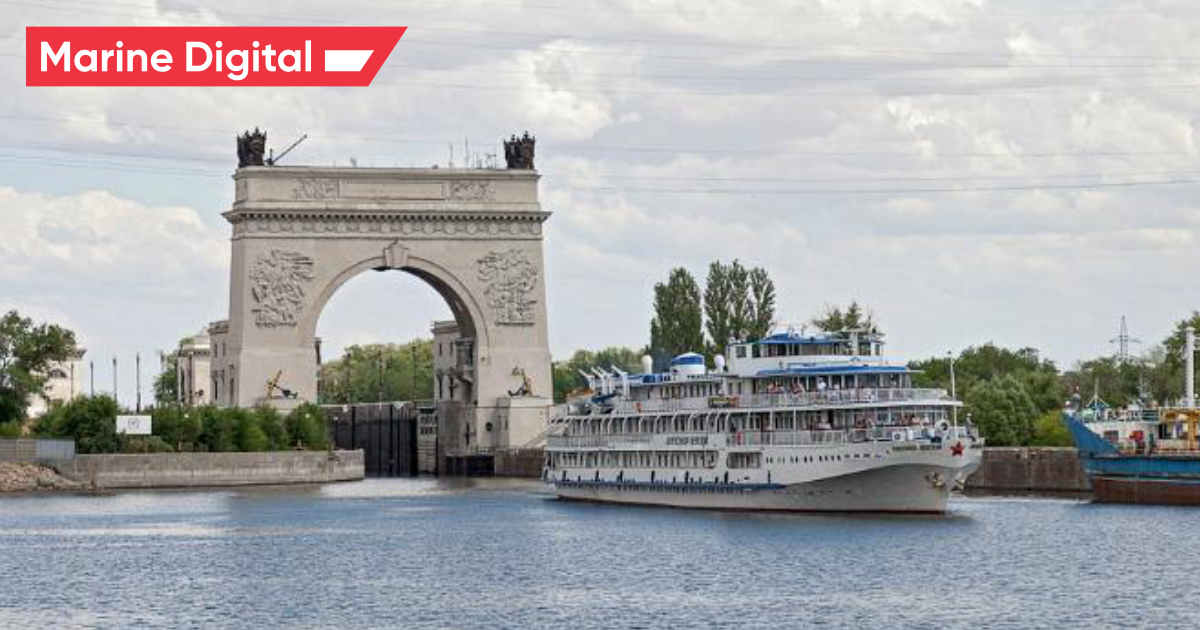
7. Rhine-Main-Danube Canal
Length: 171 km
Width: 55 m
Depth: 4 m
The construction of a navigable waterway connecting the three most important rivers in western Europe began during the First World War.
The most important sea route allows ships to move freely along the rivers between the North, Black Seas and the Atlantic Ocean. The Rhine-Main-Danube canal can handle barges with a capacity of almost 2,500 tons. Equipped with 16 locks, 11 of which are located in the Rhine basin, the rest on the Danube.
Width: 55 m
Depth: 4 m
The construction of a navigable waterway connecting the three most important rivers in western Europe began during the First World War.
The most important sea route allows ships to move freely along the rivers between the North, Black Seas and the Atlantic Ocean. The Rhine-Main-Danube canal can handle barges with a capacity of almost 2,500 tons. Equipped with 16 locks, 11 of which are located in the Rhine basin, the rest on the Danube.
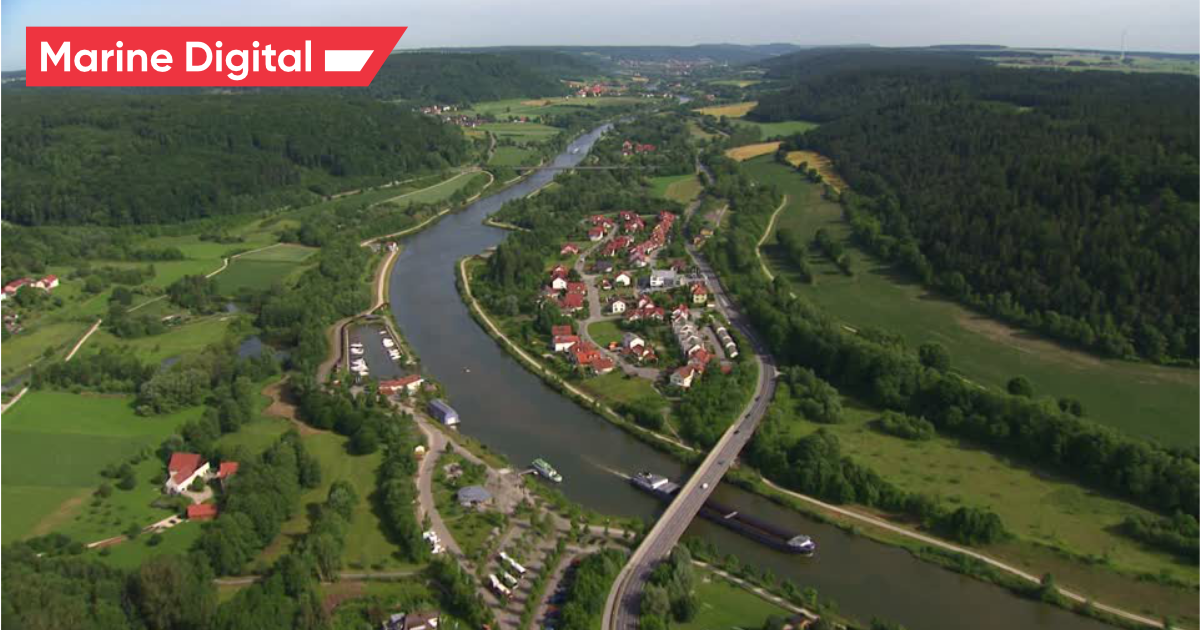
8. Kiel Canal (Nord-Ostsee-Kanal)
Length: 98 km
Width: 100 m
Depth: 11 m
The North Sea-Baltic Canal, commonly called the Kiel Canal (after the German city of Kiel, past which it is laid) is considered one of the main waterways in Germany. Now, about 250 ships from different countries of the world pass through the canal per day. It is considered the busiest waterway in Europe. From the day of opening until 1948, the canal bore the name of the Prussian king - Kaiser-Wilhelm-Kanal. The popularity of the waterway increased every year. After all, the path along the new hydraulic structure not only shortened the path by 700 km, but also made it safer. Now ships do not have to cross the difficult section of the Jutland Peninsula (Denmark-Germany).
The navigable route connecting the Baltic and North Seas took 8 years to build. Involved 9 thousand workers. 10 bridges have been thrown across the canal, 12 crossings are open around the clock. Airlocks are installed on both sides to ensure safety during high tides.
Width: 100 m
Depth: 11 m
The North Sea-Baltic Canal, commonly called the Kiel Canal (after the German city of Kiel, past which it is laid) is considered one of the main waterways in Germany. Now, about 250 ships from different countries of the world pass through the canal per day. It is considered the busiest waterway in Europe. From the day of opening until 1948, the canal bore the name of the Prussian king - Kaiser-Wilhelm-Kanal. The popularity of the waterway increased every year. After all, the path along the new hydraulic structure not only shortened the path by 700 km, but also made it safer. Now ships do not have to cross the difficult section of the Jutland Peninsula (Denmark-Germany).
The navigable route connecting the Baltic and North Seas took 8 years to build. Involved 9 thousand workers. 10 bridges have been thrown across the canal, 12 crossings are open around the clock. Airlocks are installed on both sides to ensure safety during high tides.
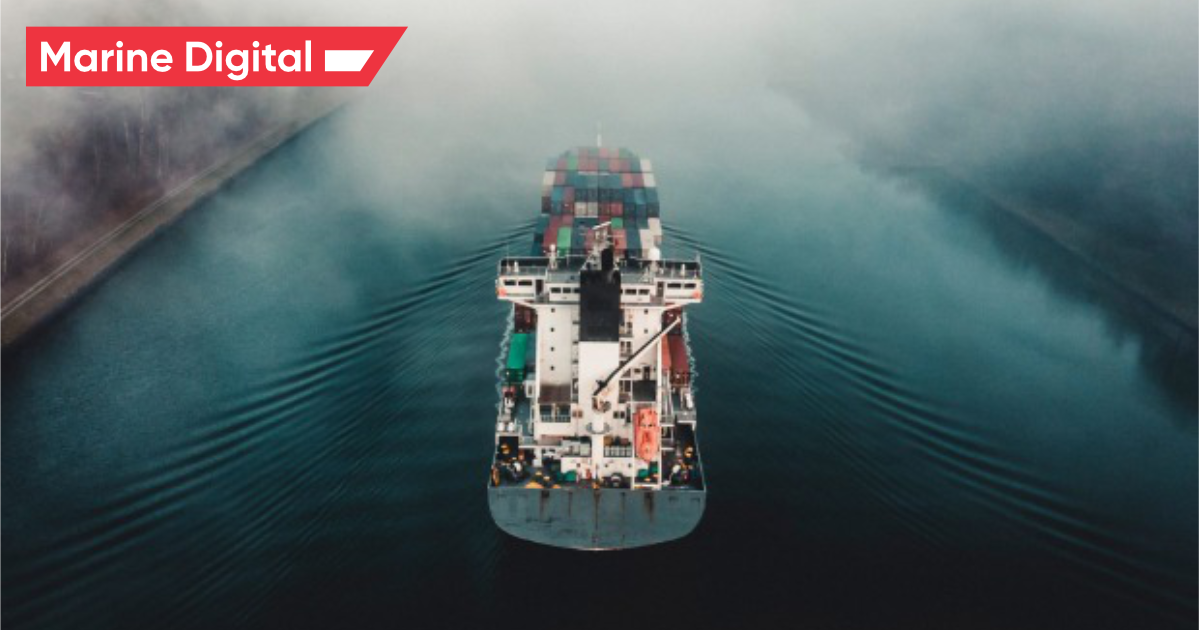
9. White Sea-Baltic Canal
Length: 227 km
Width: 36 m
Depth: 4 m
The White Sea-Baltic Sea Canal, also called the White Sea Canal, is an important waterway that originates in the White Sea and runs through northern Russia to the Baltic Sea. Despite the size of the canal, less than 2 years were spent on its construction, and the prisoners of the Gulag worked on its construction.
The White Sea Canal became one of the greatest engineering and construction projects in the USSR. Has 19 gateways.
A historical and cultural complex is currently located on the basis of the White Sea-Baltic Canal. It includes a system of closely related hydraulic structures, administrative and residential buildings. Monuments erected in honor of the lost builders are located along the sea route.
Width: 36 m
Depth: 4 m
The White Sea-Baltic Sea Canal, also called the White Sea Canal, is an important waterway that originates in the White Sea and runs through northern Russia to the Baltic Sea. Despite the size of the canal, less than 2 years were spent on its construction, and the prisoners of the Gulag worked on its construction.
The White Sea Canal became one of the greatest engineering and construction projects in the USSR. Has 19 gateways.
A historical and cultural complex is currently located on the basis of the White Sea-Baltic Canal. It includes a system of closely related hydraulic structures, administrative and residential buildings. Monuments erected in honor of the lost builders are located along the sea route.
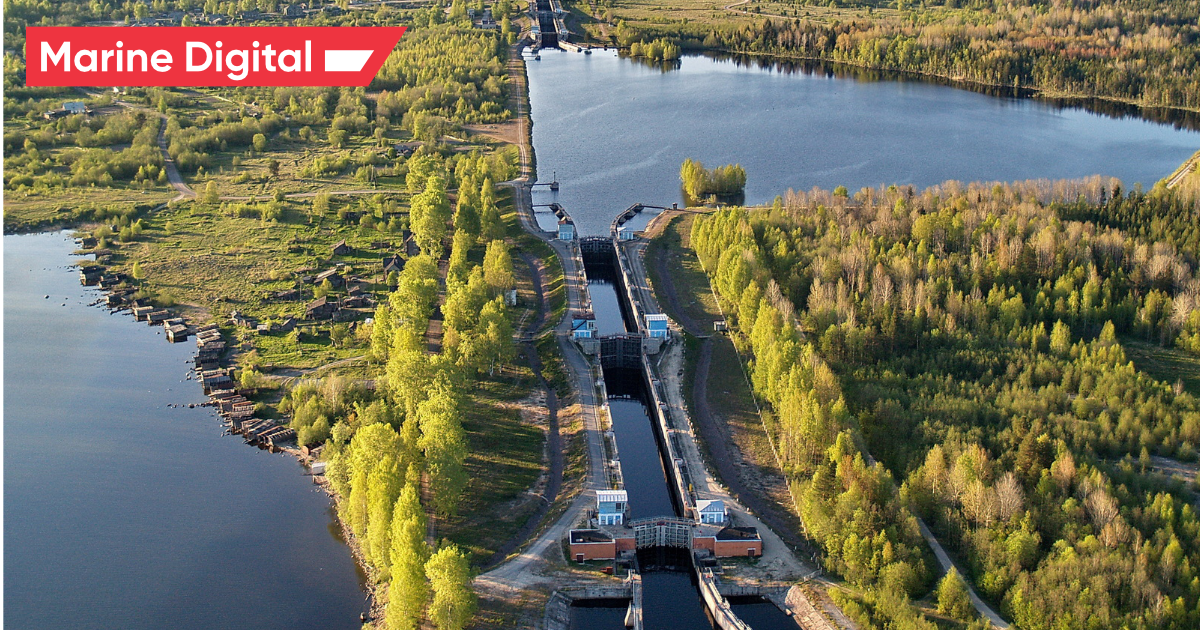
10. Houston Ship Channel
Length: 80 km
Width: 161 m
Depth: 14 m
The Houston Shipping Canal provides a link between Houston, Texas and the Gulf of Mexico. It is a vital waterway in the United States. The canal opened in 1914 and turned Texas into a thriving, vibrant state and the port gained international importance. The Houston Canal is equipped with several terminals and berthing areas. It has been expanded and deepened to ensure its continued viability.
Width: 161 m
Depth: 14 m
The Houston Shipping Canal provides a link between Houston, Texas and the Gulf of Mexico. It is a vital waterway in the United States. The canal opened in 1914 and turned Texas into a thriving, vibrant state and the port gained international importance. The Houston Canal is equipped with several terminals and berthing areas. It has been expanded and deepened to ensure its continued viability.

11. Caledonian Canal
Length: 100 km
Depth: 5.5 m
The Caledonian Canal, in Scotland, runs through the Glen More Valley from Inverness on the northeast coast to Corpach (near Fort William) on the west. The structure of the canal is rather unusual, only a third of it was laid by hand, and the rest are natural lakes: Loch Dohfur, Loch Ness, Loch Oikh and Loch Lohi. The canal infrastructure includes 10 bridges, 29 locks and 4 aqueducts.
The Caledonian Canal is one of the oldest operating in the world, its construction began in 1803. In the middle of the 19th century, the canal was improved and became much deeper, which allowed heavy vessels to pass through it. A few decades ago, the canal was the most important transport hub, and today it is, first of all, an incredibly attractive tourist attraction.
Depth: 5.5 m
The Caledonian Canal, in Scotland, runs through the Glen More Valley from Inverness on the northeast coast to Corpach (near Fort William) on the west. The structure of the canal is rather unusual, only a third of it was laid by hand, and the rest are natural lakes: Loch Dohfur, Loch Ness, Loch Oikh and Loch Lohi. The canal infrastructure includes 10 bridges, 29 locks and 4 aqueducts.
The Caledonian Canal is one of the oldest operating in the world, its construction began in 1803. In the middle of the 19th century, the canal was improved and became much deeper, which allowed heavy vessels to pass through it. A few decades ago, the canal was the most important transport hub, and today it is, first of all, an incredibly attractive tourist attraction.
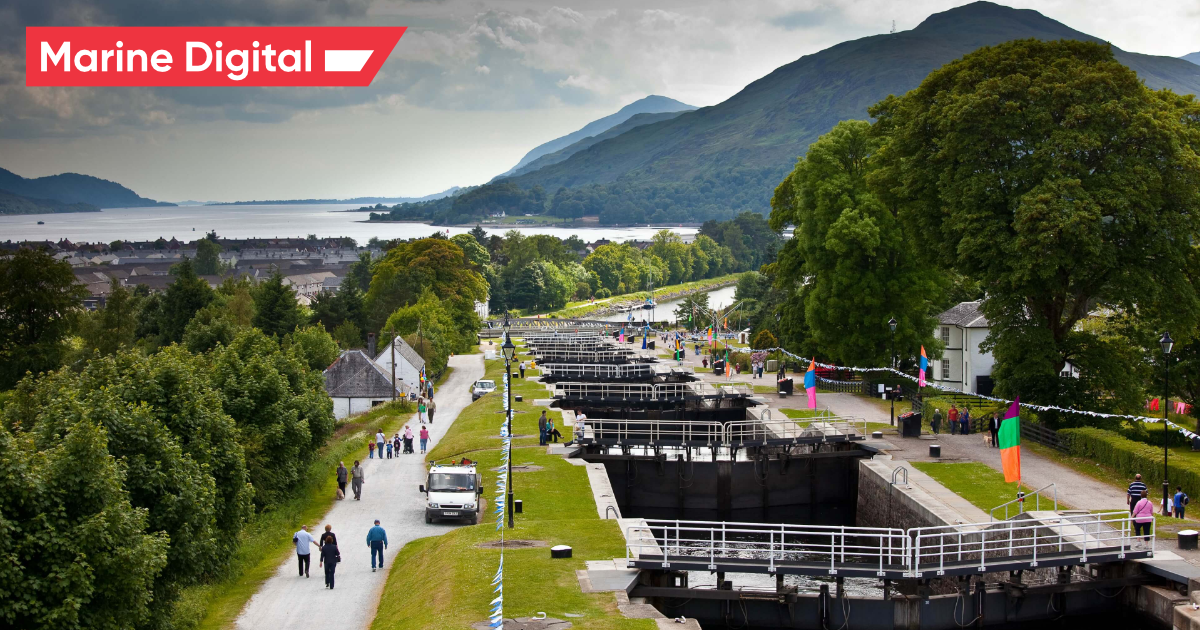
12. Erie Canal
Length: 540 km
Width: 50 m
The Erie Canal began construction in 1817 with the aim of linking the Great Lakes system with the Hudson River and the Atlantic Ocean. The economic benefits of using this canal for merchant ships were enormous: it reduced previous costs by 95%.
The structure of the canal has been continuously improved, thanks to which it has acquired quite impressive parameters. The average width of the canal is 50 meters; it has 35 locks along its entire length.
Until the middle of the 20th century, the canal remained an indispensable water route connecting a number of cities in the country, but today tourist ships form the basis of its traffic flow.
Width: 50 m
The Erie Canal began construction in 1817 with the aim of linking the Great Lakes system with the Hudson River and the Atlantic Ocean. The economic benefits of using this canal for merchant ships were enormous: it reduced previous costs by 95%.
The structure of the canal has been continuously improved, thanks to which it has acquired quite impressive parameters. The average width of the canal is 50 meters; it has 35 locks along its entire length.
Until the middle of the 20th century, the canal remained an indispensable water route connecting a number of cities in the country, but today tourist ships form the basis of its traffic flow.
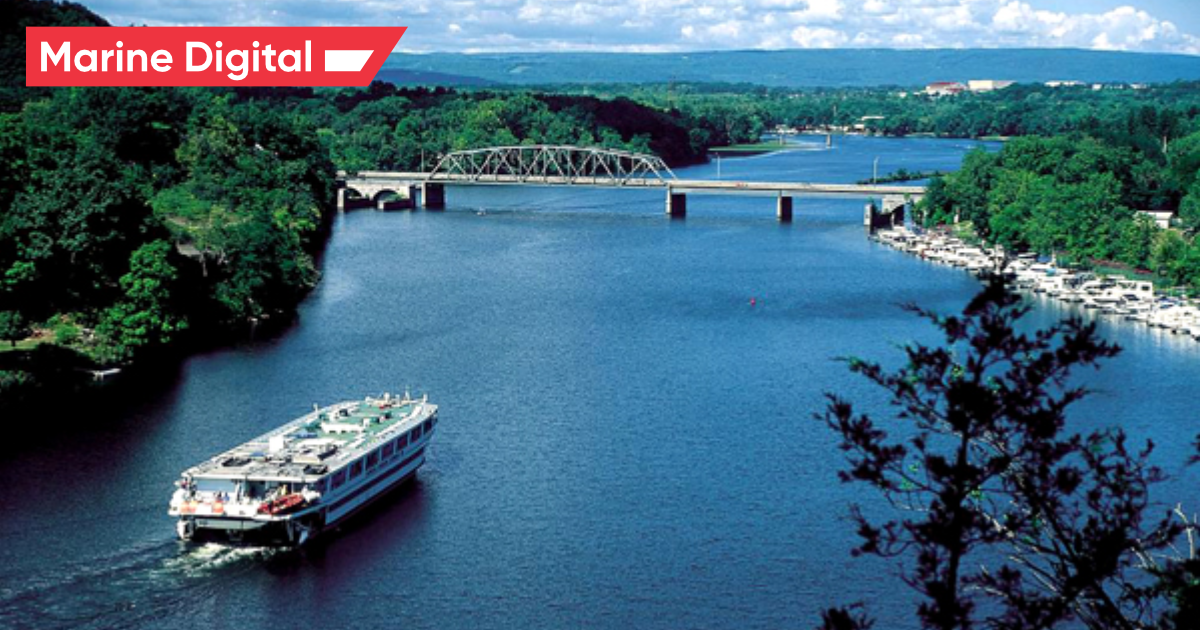
13. Khlong Canals
Length: 72 km
Width: 20 m
Khlong is a complex network of canals, one of the most important symbols of Thailand. Local residents began to build the first canals hundreds of years ago, they allowed merchant ships to ply freely around the country. The canals are connected by three large rivers: Maklong, Chao Phraya and Thachin, as well as a number of their tributaries.
With the development of shipping and transport systems, the Khlong canals gradually lost their original economic importance, so it was decided to fill up some of them. The development of tourism saved the Khlong canals from complete destruction. Now Khlong is part of the most important tourist routes and is also used for sports purposes.
Width: 20 m
Khlong is a complex network of canals, one of the most important symbols of Thailand. Local residents began to build the first canals hundreds of years ago, they allowed merchant ships to ply freely around the country. The canals are connected by three large rivers: Maklong, Chao Phraya and Thachin, as well as a number of their tributaries.
With the development of shipping and transport systems, the Khlong canals gradually lost their original economic importance, so it was decided to fill up some of them. The development of tourism saved the Khlong canals from complete destruction. Now Khlong is part of the most important tourist routes and is also used for sports purposes.
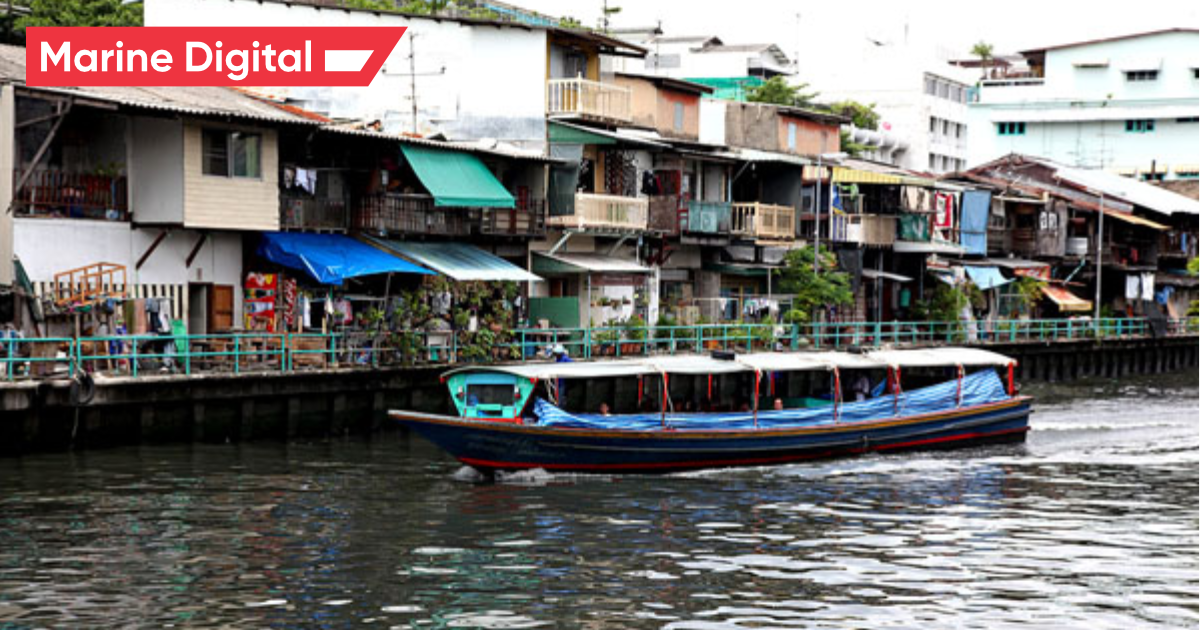
14. Göta Canal
Length:420 km
Width: 14 m
The large-scale Swedish Göta Canal, connecting the Baltic and North Seas, was built in the first half of the 19th century. The huge canal took 22 years to build, and more than 60,000 people took part in its construction, most of whom were soldiers. Having a huge length, the channel is from 7 to 14 meters wide, which allows rather large vessels to pass through certain sections of it. The maximum depth of the canal is only 3 meters; this modest figure does not in the least interfere with its active exploitation.
For about 200 years, the canal served the country's trade interests, and in recent years it has acquired many new statuses: today it is well known to fans of sailing, boat trips and fishing. The length of the canal is quite impressive and is about 420,000 meters; it includes 58 locks and a huge number of related buildings.
Width: 14 m
The large-scale Swedish Göta Canal, connecting the Baltic and North Seas, was built in the first half of the 19th century. The huge canal took 22 years to build, and more than 60,000 people took part in its construction, most of whom were soldiers. Having a huge length, the channel is from 7 to 14 meters wide, which allows rather large vessels to pass through certain sections of it. The maximum depth of the canal is only 3 meters; this modest figure does not in the least interfere with its active exploitation.
For about 200 years, the canal served the country's trade interests, and in recent years it has acquired many new statuses: today it is well known to fans of sailing, boat trips and fishing. The length of the canal is quite impressive and is about 420,000 meters; it includes 58 locks and a huge number of related buildings.

15. Canal du Midi
Length:240 km
Width: 20 m
The Canal du Midi is located in France and for many travelers, it is known as "Languedoc" or "South". The Canal du Midi is the oldest operating canal in Europe, connecting two major cities - Toulouse and Sete.
Du Midi was built in 15 years, the first ships passed through it in 1681 and since then the movement along the canal has never stopped, even in wartime it was actively used by merchant and cargo ships.
Width: 20 m
The Canal du Midi is located in France and for many travelers, it is known as "Languedoc" or "South". The Canal du Midi is the oldest operating canal in Europe, connecting two major cities - Toulouse and Sete.
Du Midi was built in 15 years, the first ships passed through it in 1681 and since then the movement along the canal has never stopped, even in wartime it was actively used by merchant and cargo ships.
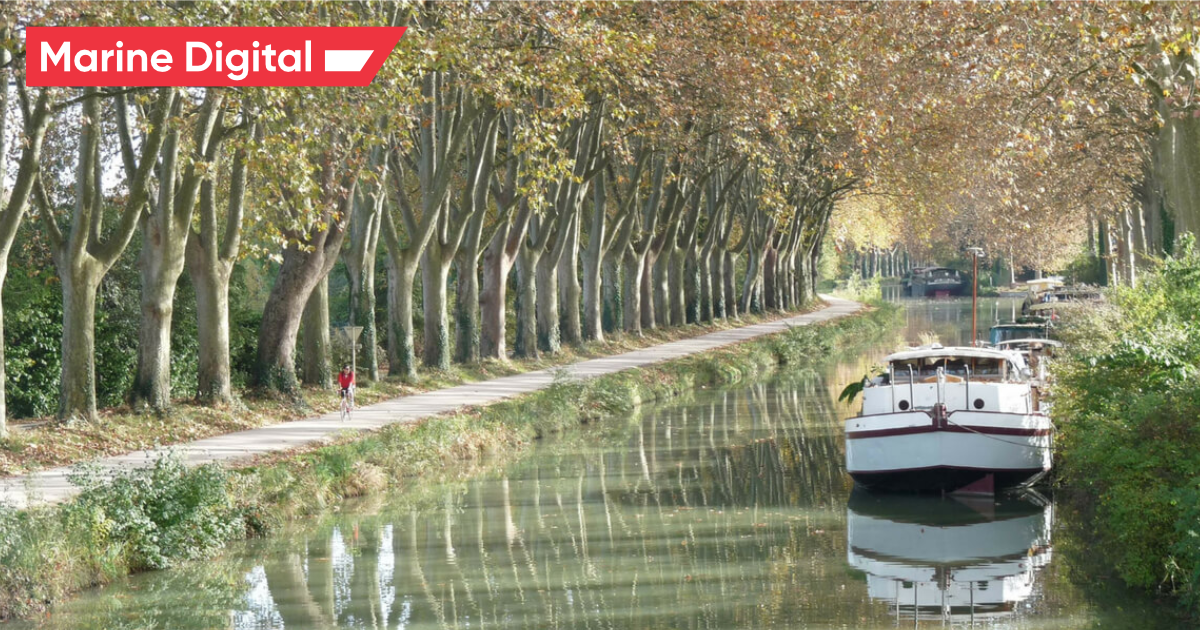
+The Veluwemeer Aqueduct:
Netherland's Unique Water Bridge
Length: 19 m
Width: 25 m
Depth: 3 m
Opened in 2002, the Veluwemeer Aqueduct is a stunning work of architecture and engineering. During the design of the unique bridge structure, engineers chose to construct the waterway over the N302 road, where around 28,000 vehicles pass each day. Unlike drawbridges or other roadway structures, the water bridge design allows constant traffic flow to pass both on the road and over the aqueduct.
The Veluwemeer Aqueduct is a shallow 9.83 feet (3 m) deep water bridge that allows small boats and other shallow-draft water vehicles to pass over the road safely and easily. The road itself includes designated cycle lanes as well as pedestrian walkways located on both sides.
The Veluwemeer Aqueduct was built using 776,922 cubic ft (22,000 cubic m) of concrete, and steel sheet piling to both hold the weight of the water above the roadway and prevent sediment from bleeding onto the road.
While this structure does not set any records, it does stand as one of the shortest aqueducts in the world. Not to mention, one of the world's most interesting.
Width: 25 m
Depth: 3 m
Opened in 2002, the Veluwemeer Aqueduct is a stunning work of architecture and engineering. During the design of the unique bridge structure, engineers chose to construct the waterway over the N302 road, where around 28,000 vehicles pass each day. Unlike drawbridges or other roadway structures, the water bridge design allows constant traffic flow to pass both on the road and over the aqueduct.
The Veluwemeer Aqueduct is a shallow 9.83 feet (3 m) deep water bridge that allows small boats and other shallow-draft water vehicles to pass over the road safely and easily. The road itself includes designated cycle lanes as well as pedestrian walkways located on both sides.
The Veluwemeer Aqueduct was built using 776,922 cubic ft (22,000 cubic m) of concrete, and steel sheet piling to both hold the weight of the water above the roadway and prevent sediment from bleeding onto the road.
While this structure does not set any records, it does stand as one of the shortest aqueducts in the world. Not to mention, one of the world's most interesting.
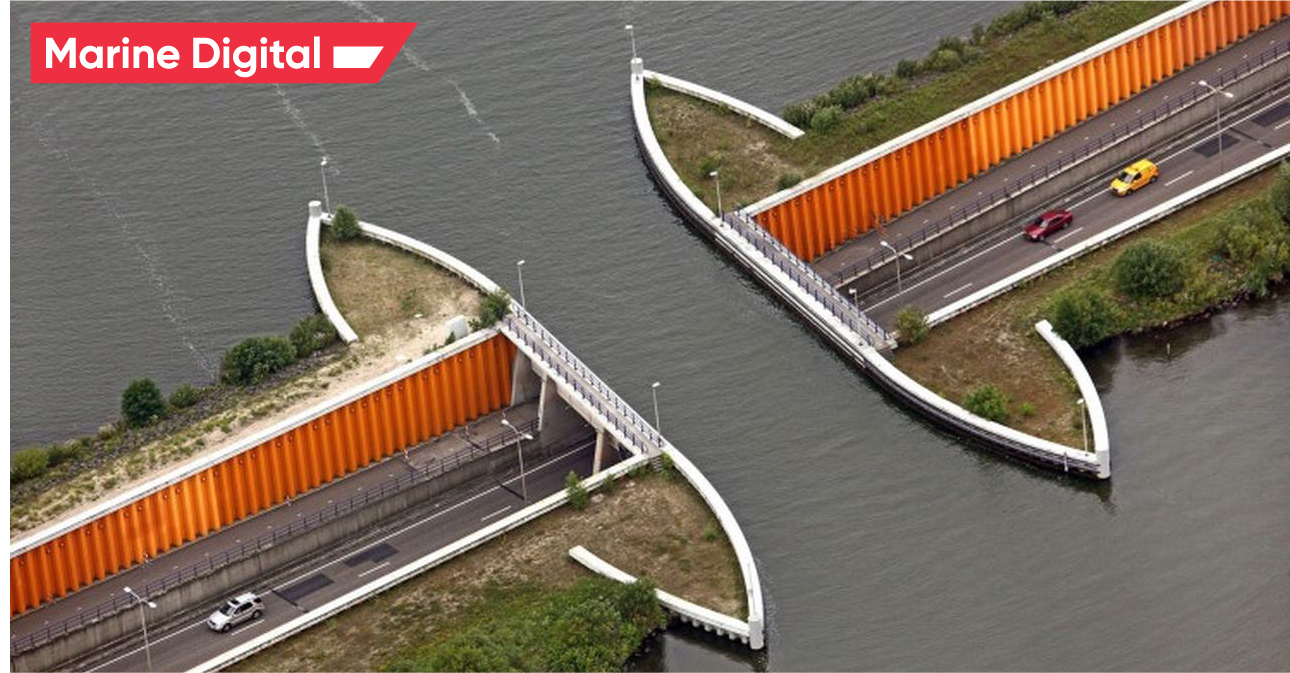

TOP 5 factors contributing to lower fuel costs for Shipping companies
Get a presentation with a full description of the features and free pilot project with trial of Marine Digital FOS for 2 months
"Clicking the button, you consent to the processing of personal data and agree to the privacy policy"

Get an overview "The Pathway to Zero Carbon Shipping:
IMO Compliance and CII Optimization through SEEMP" on email and download it for FREE! Leave your email now!
"Clicking the button, you consent to the processing of personal data and agree to the privacy policy, as well as consent to subscribe to the newsletter. "
Аdvantage of Fuel Optimization System from Marine Digital:

Marine Digital FOS can be integrated with other system and third-party's solutions through the API. To implement vessel performance monitoring for any vessel, we are using mathematical algorithms, machine learning and the same equipment as in FOS. The more data we collect from vessels, the more precise reports and recommendations our system will perform according to your individual requirements in fleet management.
If you have any questions about the solutions and the Marine Digital System platform, write to us, we will be happy to answer
If you have any questions about the solutions and the Marine Digital System platform, write to us, we will be happy to answer

Increased business process speed

Reducing to zero the number of errors

Best offer to the clients

Reduction in operating expenses
Have a questions?





